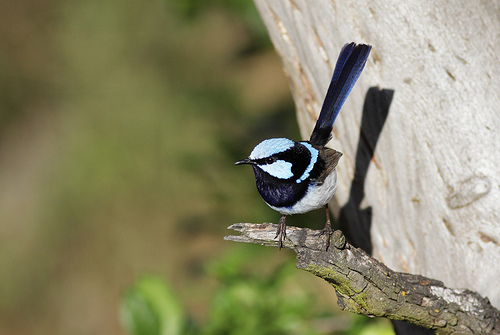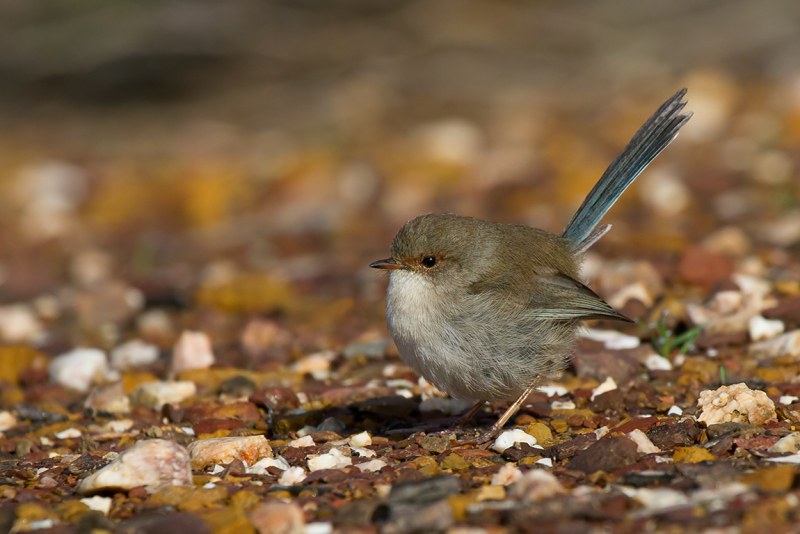Colours
Distinguishing features
They are notable for their marked sexual dimorphism, males adopting a highly visible breeding plumage of brilliant iridescent blue contrasting with black and grey-brown. The brightly coloured crown and ear tufts are prominently featured in breeding displays.
The breeding male has a bright-blue forehead, ear coverts, mantle and tail, brown wings, and black throat, eye band, breast and bill.
Females, immatures, and non-breeding males are a plain fawn colour with a lighter underbelly and a fawn (females and immatures) or dull greyish blue (males) tail.
The bill is brown in females and juveniles and black in males after their first winter. Immature males moult into breeding plumage the first breeding season after hatching, though incomplete moulting sometimes leaves residual brownish plumage that takes another year or two to perfect.
Both sexes moult in autumn after breeding, with males assuming an eclipse non-breeding plumage. They moult again into nuptial plumage in winter or spring. (Wikipedia)
Size
- Up to 14 cm (Length of specimen)
Wingspan
- Wingspan data is not yet available.
Synonyms
Distribution
Distribution and habitat preferences
It is common throughout most of the relatively wet and fertile south-eastern corner of the continent, from the south-east of South Australia (including Kangaroo Island and Adelaide) and the tip of the Eyre Peninsula, through all of Victoria, Tasmania, coastal and sub-coastal New South Wales and Queensland, through the Brisbane area and extending inland – north to the Dawson River and west to Blackall; it is a common bird in the suburbs of Sydney, Melbourne and Canberra.
It is found in wooded areas, generally with plenty of undergrowth, and has also adapted to urban existence and can be found in gardens and urban parks as long as there is an undergrowth of native plants nearby. (Wikipedia)
Diet
They are predominantly insectivorous. They eat a wide range of small creatures (mostly insects such as ants, grasshoppers, shield bugs, flies, weevils and various larvae) as well as small quantities of seeds, flowers, and fruit.
Their foraging, termed 'hop-searching', occurs on the ground or in shrubs that are less than two metres high. Because this foraging practice renders them vulnerable to predators, birds tend to stick fairly close to cover and forage in groups.
During winter, when food may be scarce, ants are an important 'last resort' food, constituting a much higher proportion of the diet.
Nestlings, in contrast to adult birds, are fed a diet of larger items such as caterpillars and grasshoppers. (Wikipedia)




